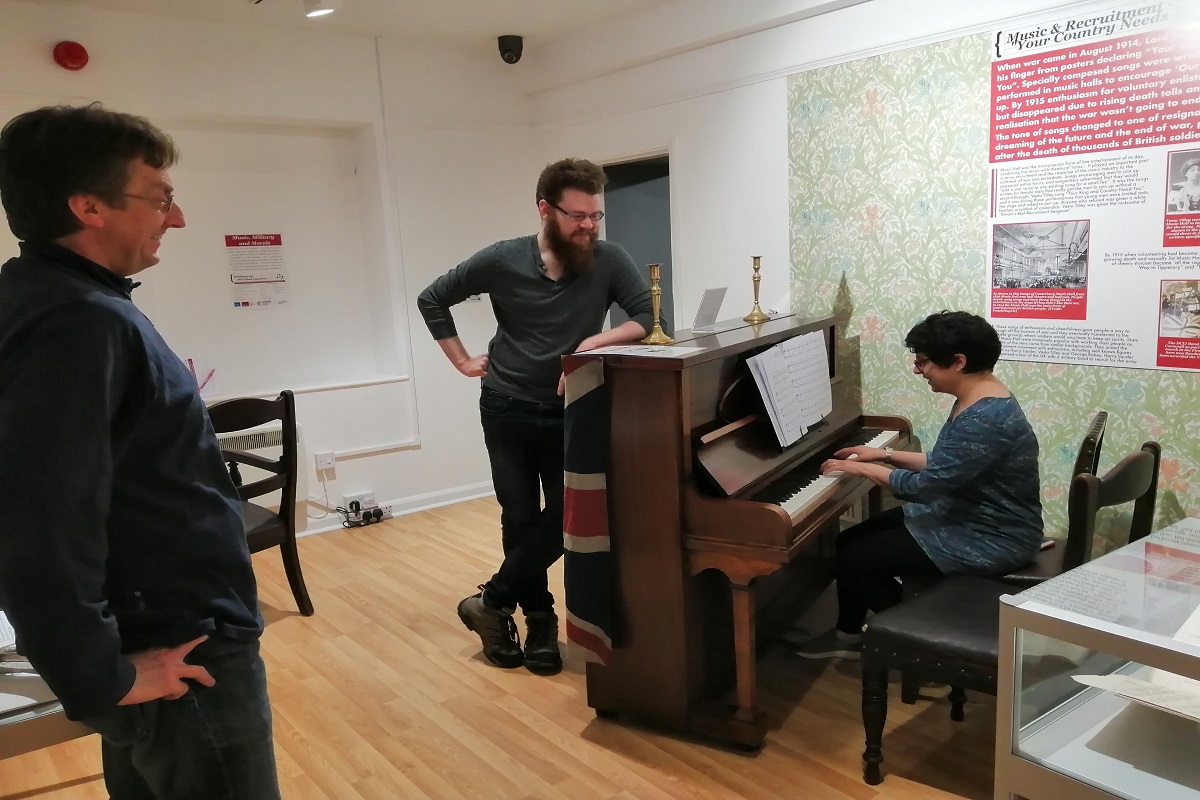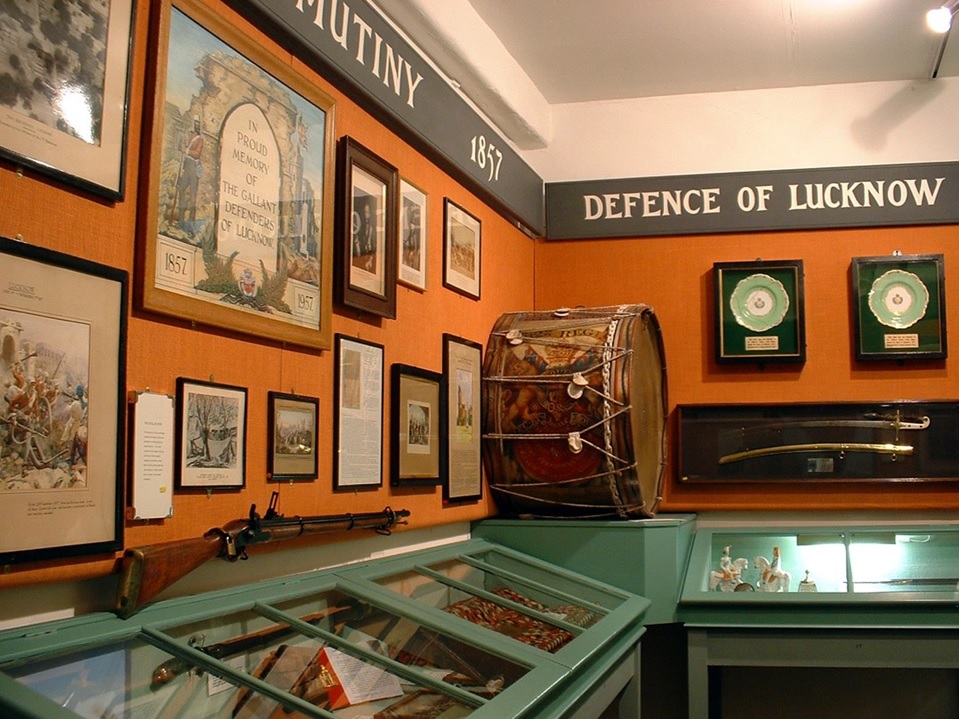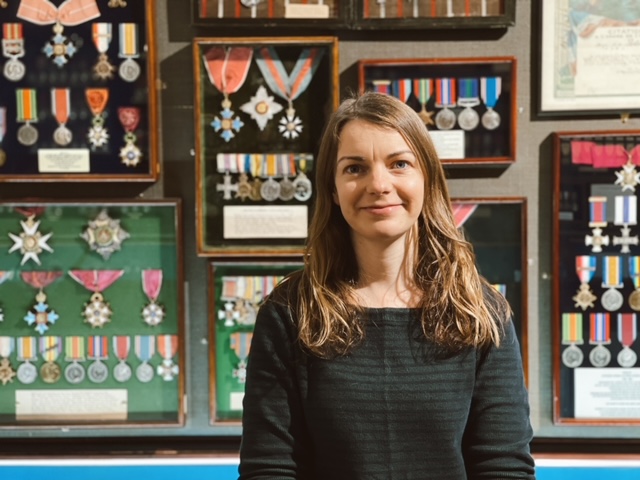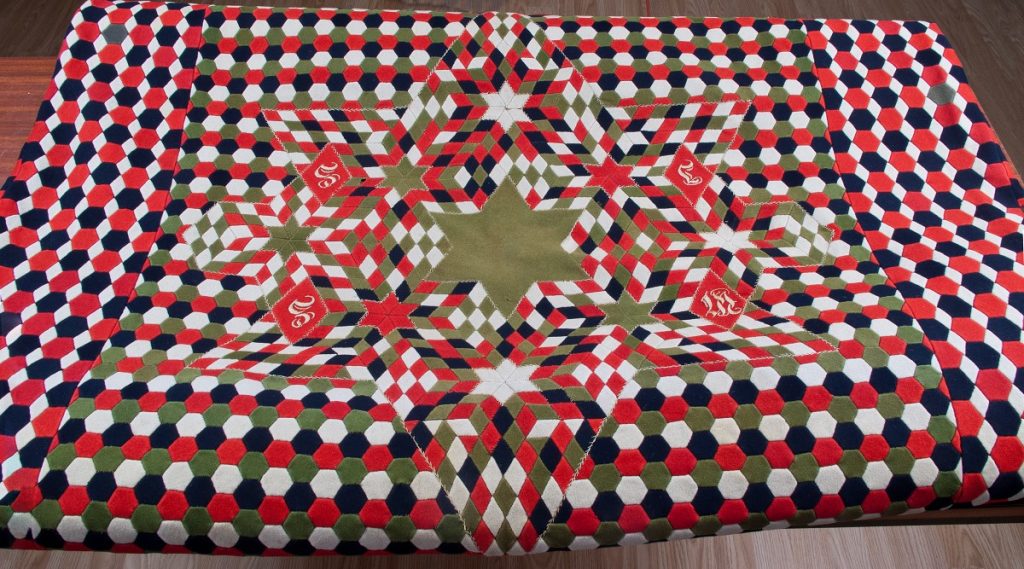Lucknow Quilt
The Citizen Curators programme is a free work-based training programme in museum awareness and modern curatorial practice aimed at volunteers from our community. It is provided by Cornwall Museums Partnership in collaboration with seven museums. It is funded for three years by the Museums Association’s Esmée Fairbairn Collections Fund (2018-21). The Programme Leader is Dr. Tehmina Goskar, Curator & Director of the Curatorial Research Centre. The programme seeks to engage people in thinking of museums in new ways, encouraging them to challenge traditional views, to develop their own views on museum issues such as decolonisation, whilst also giving them experience in the more practical elements of museum work, such as research, object handling and interpretation.

2018-2019 Citizen Curators with Tehmina Goskar
At Bodmin Keep: Cornwall’s Army Museum, we have had three years of volunteers involved in the Citizen Curators programme. The opportunity to work with new and existing volunteers in reinterpreting our collections and giving them skills and understanding of museum practice was exciting. We are a museum starting to change, to look at our current displays and see how we can reinterpret them to be more balanced and relevant to a wider audience. In 2018, this included the development of an exhibition by our Citizen Curators about the role of Music in the Military, and its use more widely for recruitment. The theme of music was one that we knew would have an appeal beyond those who would normally visit military museums, being relevant to a much wider range of our society. In 2020-21 the theme was around the Second World War, particularly relating to unknown stories of the Americans in Cornwall, our own site history, and Jewish people in Cornwall.
In 2019-2020, the display to be updated was our interpretation of the conflict in India in 1857. We wanted new perspectives to interrogate and research the conflict and produce new high-quality interpretations. The interpretation that our Citizen Curators would be replacing was sparse and reflected only the conflict from a military perspective. We wanted them to look at our displays with fresh eyes, with a view to giving a more balanced and understanding interpretation, to tell the history not only of the regiment but those impacted by the conflict. The Citizen Curators worked together to come up with core themes for the redisplay of the Lucknow and Cawnpore material including looking at previously overlooked stories of women and children, and the perspective of Indian soldiers involved. This then fed into interpretation plans for display and digital content. They were keen to look at the cause of the conflict, and tell individual stories of those involved, whether men or women, military or civilian and whether British or Indian.


Citizen Curator, Lesley, said “The more we can explore and diversify the way we communicate, the more we can engage people’s senses and the more we will resonate with our audience. Approaching a museum exhibit, or even the display of a single object, with the idea of “What story do I want to tell?” rather than “Which facts do I want to teach?” is incredibly inspiring and exciting for me.”
They wanted to look at the use of language, recognising that this is a key factor in the interpretation of any history, with different sides using different language to describe the same event. Traditionally the museum interpretation referred to the 1857 conflict as the Indian Mutiny, being the way it had historically been referred to by documenters of the time. This language, in no way reflected their own views on the subject, or the views of others. In order to address this conundrum of the use of language in interpretation, the Citizen Curators designed a simple voting system so that people could have their own say on what they thought it should be referred to as.

Isabella Hogan, Trainee Curator with her reinterpretation of our Lucknow material
In developing the redisplay, the Citizen Curators looked at what objects were on display, and what else we had (very little) that could be added. They also discovered new things about the collection: such as, that the interpretation of a quilt as being produced by several women was in fact made by one man. A lesson in not always believing what you read, and always making sure you check any information received with an object on its entry into the museum before producing its object label.
With the advent of the COVID-19 pandemic, the project though a long way down the development road had to be halted, to be picked up again by our Trainee Curator in 2021. She worked with our Citizen Curators to look at the themes they had explored and the research they had done and used this to develop the final interpretation for the museum, which has now opened to the public. The interpretation seeks to give a more balanced view of the situation in India in 1857 and uses more well-thought out, detailed and well researched text and images to do this.

Verity Anthony is Assistant Director (Collections and Operations) at Bodmin Keep: Cornwall’s Army Museum in Cornwall, UK. With a career in museums spanning over a decade, she has significant experience working with museum collections from archaeology through to the military and has experience in the front-line operation of museums. She is an Arts Council Accreditation Mentor and sits on the board of a Town Council operated museum, Lawrence House in Launceston, Cornwall.








Recent Comments